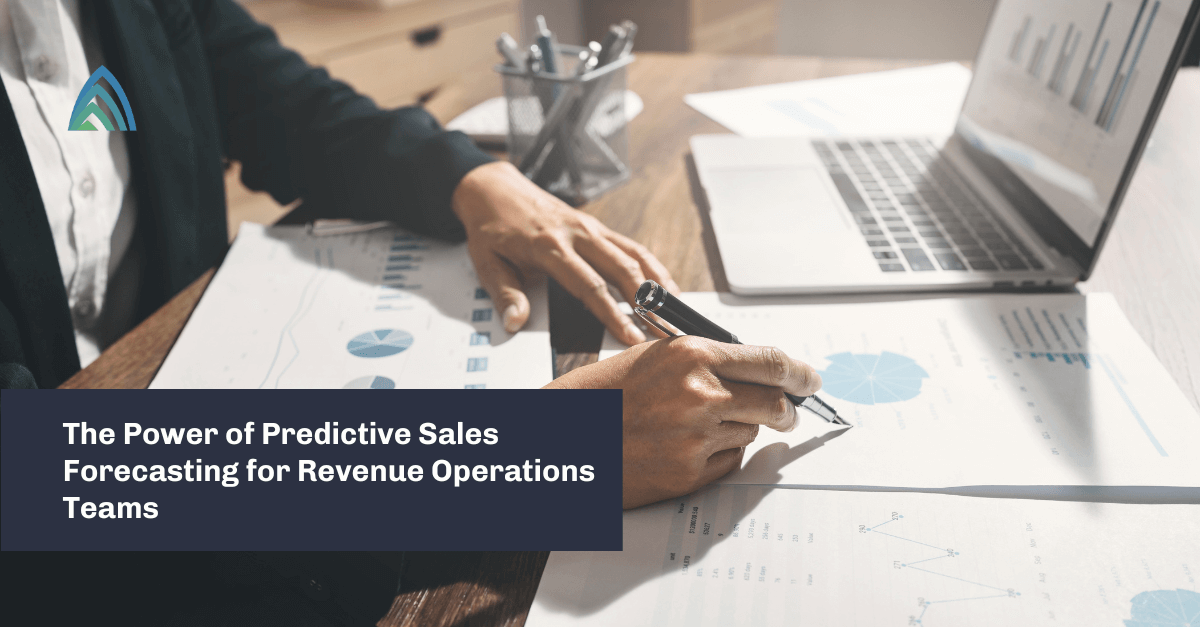Generative AI has taken the world by storm. As organizations scramble to determine how they can leverage the power of tools such as ChatGPT, Einstein GPT, and others, they face a big question: How can LLMs and generative AI models be used to drive actionable, meaningful business value?
This question has been the impetus for one of the key trends that we have seen develop in industry over the past year: the transition of generative AI from toys to tools, and now, to frameworks that underlie many of the technologies organizations will use (or already use) to drive business processes and make decisions.
The possibilities provided by AI sales forecasting
That being said, Generative AI is just another tool in the IT toolkit, and while it may help drive automation, it will still need to be used in tandem with bread-and-butter tools like standard dashboard-based analytics and predictive modeling tools to build a smarter, data-driven experience.
For sales organizations, multifaceted problems like sales forecasting can require a combination of all three tools to drive meaningful value. Below, we’ll explore forecasting in combination with generative AI, helping to elucidate where traditional tools like predictive analytics may be useful, how generative AI tools can help add value, and provide some tips on things to consider when leveraging AI in a forecasting landscape.
Differences between generative AI and predictive analytics
AI has gained serious traction over the past year, largely driven by a focus on automation enabled by generative AI models. However, AI also includes a suite of tools for predictive models that differ in key ways from generative models.
In predictive analytics, statistical (or machine learning-based) models are trained on historical data to identify patterns and correlations. For predictive models, a key focus area for IT organizations is around collecting and maintaining representative training data that can be used to train better, more accurate models.
On the other hand, generative AI models such as LLMs are typically pre-trained on a large corpus of text data, and instead of predicting an outcome like a classification or a number, they can generate novel text outputs.
Sales forecasting models to the rescue
Sales forecasting poses a significant problem for many sales organizations. In particular, setting reasonable quotas, understanding key drivers of deal conversion, and prioritizing which opportunities are most likely to convert are all key challenges for companies trying to be more data-driven in their sales forecasting processes.
There are several ways companies can build out their sales forecasting processes, but if they want to be more efficient, they can opt to lean into analytics and machine learning to help drive a more consistent and transparent sales funnel.
Analytics apps and dashboards that show up-to-the-minute metrics around sales pipelines can help drive transparency and help both reps and their managers understand where their funnel is at as they get toward quarter end. By learning from historical trends in pipeline conversion and opportunity management, companies can turn their focus toward predictive models oriented toward identifying the leads and opportunities that are most likely to convert.
Bottom-up forecasting
One useful way that predictive analytics tools can help drive smarter sales forecasts is by leveraging “bottom-up” forecasting methods. In this situation, we start with a predictive model that scores each opportunity based on its likelihood to convert. The outputs from this model can include both a predictive “score” (i.e., a 75% would indicate that a given opportunity is 75% likely to be sold), as well as the top variables in the model that are positively correlated to that score.
Bottom-up forecasts can provide multiple benefits to a revenue operations (aka revops) team because the opportunity scores and their related insights can be useful in driving better decision-making by reps. Sales reps can leverage opportunity scores to prioritize which opportunities to work, along with using record-level insights to identify meaningful pain points and potential actions that might be most important for helping a given opportunity to convert. Moreover, managers can use models to identify common patterns and trends that can be used to help coach their sellers to be more directed, personalized, or proactive when working through their funnel.
Top-down forecasting
Top-down forecasting, on the other hand, takes a more aggregated approach — looking at a top-line revenue or run-rate number over time. Top-down approaches typically use time-series (i.e., predictive) methods and are often useful in situations where deals aren’t tracked as opportunities (e.g., blind bookings).
Combining bottom-up and top-down approaches for predictive sales forecasting
Often, the best forecasting solutions combine bottom-up and top-down approaches for predictive models along with robust dashboard-based visualizations. At Atrium, we have even developed a series of accelerators, or pre-built components, for Tableau and CRM Analytics to help you successfully track and measure different sales forecasting goals.
Additionally, Salesforce recently rolled out Revenue Insights, a series of dashboards and models in CRM Analytics and Einstein Discovery designed to help organizations build out more robust forecasting tools. You can learn more about Salesforce Revenue Intelligence and its key capabilities in this whitepaper we co-created with Salesforce.
Driving sales forecasting automation
The primary way that generative AI will help drive better forecasting processes is by layering in with analytics and predictive modeling solutions to drive automation.
Better together: generative and predictive models working in combination
Although generative AI does not in itself help organizations make better forecasts, it can help companies to do more with the information they obtain from predictive forecasting models. By leveraging both technologies to add value, organizations can truly drive an intelligent, data-driven forecasting process.
Other considerations and use cases for generative AI
How else might generative AI be useful in driving better forecasting for revenue operations teams? Below are a few sample use cases.
Sentiment analysis and text data summarization
LLMs can be used to accomplish tasks like sentiment analysis and can be used to summarize open text like sales notes to determine common themes that might be helpful in a predictive modeling framework. Common pain points that slow down deals, or trends that accelerate opportunity conversion can be used to help managers coach their reps on better ways to manage their pipeline and get deals across the goal line faster.
Feature engineering for predictive models
Some of the insights that LLMs might identify on text data could be used as features in a predictive model. In this way, an LLM could provide a revops team with a way to identify more nuanced trends that aren’t explicitly tracked in CRM except in notes to inform opportunity scores and a bottom-up forecast. LLMs can provide an automated way to make structured features from unstructured text data, opening a way to achieve better predictive results from existing models.
Creation of synthetic data
In some situations, LLMs can be used to create synthetic data that may be used to help train predictive models, or give organizations a framework to “pressure test” forecasting models that exist. In such cases, synthetic data could also be used to help managers coach their reps on how to handle different sales scenarios.
Improving sales data
Using LLMs to summarize sales meetings, create consistent frameworks that track opportunity progress, or identify key milestones in the funnel may help organizations generate better data that can be used to more granularly measure how close opportunities are to closing. By improving data, organizations can improve the accuracy and usefulness of predictive models that drive forecasts, and ultimately get to a more precise sales forecast in the future.
Not sure where to start, or just have questions about what you might be able to do?
Certainly, some organizations may have more industry-specific use cases that merit consideration. But keep in mind that as companies invest in generative AI tools, they will need to navigate the pros and cons of building vs. buying tools that are tailored to specific use cases. Your organization may be considering making investments in generative AI as well as predictive analytics and machine learning. If so, consider taking a measured approach where insights are combined with automation by layering predictive models with generative AI functionality to enable automation.
It helps to have a partner to guide you as you embark on customized solutions to support your sales and revops teams. Atrium specializes in helping organizations plan, build, implement, and enable technologies like generative AI, predictive modeling, and real-time dashboarding to help companies take advantage of their data to make better decisions.
Reach out to discuss your next steps with predictive sales forecasting, generative AI, and your unique use cases.








